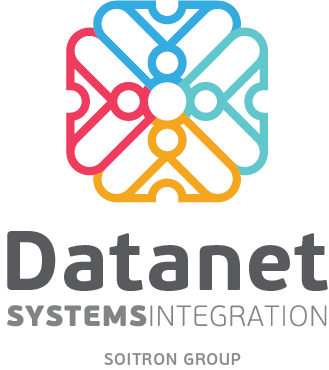 The large scale mobility adoption in the enterprise field is forcing the companies to keep up with the requirements of the new generation equipment and applications. Datanet Systems has already many ongoing development and implementation projects of WLAN network compatible with WiFi 802.11ac., capable to meet the increasing needs of the mobile users.
The large scale mobility adoption in the enterprise field is forcing the companies to keep up with the requirements of the new generation equipment and applications. Datanet Systems has already many ongoing development and implementation projects of WLAN network compatible with WiFi 802.11ac., capable to meet the increasing needs of the mobile users.
The more and more exigent demands of the employees, with strict requirements concerning the speed and quality of the Internet connectivity, and the popularity of the mobile devices used for professional purposes – smartphones, tablets, laptops – represents a constant challenge for the capacity of the wireless networks.
The increasing density effect in the enterprise area, of the users and of the equipment is magnified by the more and more extended usage of the over IP audio and video applications on the mobile equipment, of the ones for wireless localization – for the companies that allows access to resources and applications only if the user is present in a strict and limited perimeter – of the collaborative work solutions with large volume of file sharing, etc. All these types of applications require larger and larger band widths, leading to the congestion of the WLAN networks that drops their level of performance.
These are visible effects, especially for the organizations that are using Access Points at their end life duration and support, like the equipment that function by 802.11n standard (ratified by IEEE 8 years ago).
In these situations, companies are practically bound to find viable solutions from a technological or economical point of view, to offer access to more equipment, maintaining the levels of liability and quality of the mobile connections, in order to avoid affecting the productivity of the end users.
802.11ac=80% of enterprise Aps
To answer this amount of challenges, more and more organizations are opting for the acquisition of Access Points (AP) compliant with the new standard 802.11ac WiFi 802.11ac and Wave 2. Currently, the first version of 802.11ac (“Gigabit Wi-Fi”) has become the dominant standard in the WLAN enterprise equipment market. In 2016 .11ac the equipment represented 60% of total APs purchased by companies (according to IDC). Infonetics analysts estimated that by the end of this year, the “Gigabit Wi-Fi” equipment will come to represent 80% of functional APs within organizations and 90% until 2019.
In turn, the second version of 802.11ac ratified by the WiFi Alliance last year, is growing very fast. According to IHS Markit analysis, “Wave 2” already represented 10% of the total Aps, sold in the third quarter of 2016 (double from the previous quarter). According to IDC, the two versions have the fastest adoption phase in the 20 years history of 802.11 WiFi standard.
What are the benefits?
The companies’ appetite for 11ac standards has various reasons. On the one hand, is about the “speed” gain that it offers – a definitive trait for the mobile users, which want to access data very fast, the “speed” being often, direct proportional with productivity.
The “Gigabit Wi-Fi” 1 version allows to reach a bit rate of 1,3 Gbps, 3 times faster than the previous standard (11n) and is very similar to what it has to offer a classic Gigabit Ethernet connection. ”Wave 2” outbids the offer and runs from 2.32 Gpbs, being able to reach up to 3, 47 Gbps. The “speed” gains explain, partially, the reason why more companies invest in WLAN networks upgrade, choosing to transform the fixed networks in back-up solutions. This decision is sustained by the fact that more and more mobile equipment don’t have connectivity options to fixed networks. (Wireless priority against wired networks is visible, especially for start-ups, which are growing or moving in new offices and for the ones that are adopting BYOD mobility).
The considerations of 11ac standards are not relying only to “speed” upgrades. “Gigabit Wi-Fi” solve, form the beginning, by using 5GHz frequency, another critical problem – the one of interferences that come when using 2,4 GHz frequency. The also true is that, 5GHz frequency reduces the coverage area of the Aps that is smaller than the one offered by the equipment that operate with 2,4GHz. To compensate this flaw, 11ac versions use Beamforming technology, which allows the Aps to detect the receiver devices and to broadcast the signal directly to them (unlike the previous standards, b/g/n, that broadcast the signal equally, to all directions). For “focusing” is used a system of multiple antennas, that concentrates the signal to the detected clients, and also the Multiple-Input-Multiple-Output (MIMO) technology, that “congregates” various signals broadcasted by different antennas in one single, more powerful signal.
Another two important competitive advantages of the version 1, are the ability to use 80 MHz band width, in this way, providing a larger data amount (unlike 11n, that uses 40MHz channels) and 256-QAM modulation, that increases four times the efficiency usage of the spectrum (in comparison with 11n).
802.11ac Wave 2 intensifies these benefits by enhancing Multi-User-MIMO that ensures simultaneous broadcast of many data flows to multiple clients/receivers. Additionally, version 2 allows sending 4 data flows (the other first version allowing maximum 3), “consolidating” multiple channels in one with 160 MHz bandwidth. All these technological positive features ensure more available bandwidth and a better signal allocation, resulting in the expansion of the WLAN network support capacity and the possibility of serving multiple end users / mobile equipment.
Cisco advantages
Cisco is the first vendor who succeeded in 2014, at just one year after the official ratification of the first version of IEEE 802.11ac standard, to exceed the threshold of 1 million sold 11ac Access Points. Currently, Cisco is the leader in WLAN equipment market, with a share of 46% in the first quarter of the last year and by 30 percent over the next in line, according to IHS Markit.
It is a position that Cisco constantly reinforces through the performance and reliability of the delivered products, but also by its promoted pricing policy, namely, the small price differences of the new generation equipment, compared to the previous generation ones. (For example, APs 11ac Wave 2 are approximately 10% more expensive than those that operate in version 1.)
Another Cisco advantage is WLAN equipment continuous updates by adding new functionalities. Let’s take, for example, the case of “Flexible Radio Assignment” technology (introduced together with AP Aironet 2800 and 3800 series), that scans and tracks permanently the mobile equipment number oscillations that is connected to the wireless network. When it detects the risk of an overload (number of users, devices and / or applications with high bandwidth requirements), FRA commands dual band AP transformation that usually operates in 2.4GHz / 5GHz frequencies in a dual mode that operates in 5GHz / 5GHz to serve more users and thus eliminate the risk of interference and congestion. Once detected, the exceeding peak load, FRA orders to AP to return to the initial operating mode (2.4GHz / 5GHz). The advantage is that all these measures are taken automatically, without requiring the network administrator intervention, thus ensuring OpEx savings and improving quality of services provided to end users.
A business decision
Market analysts insist that the transition to new standards 11ac is ultimately less a purely technological decision, but a business one. The arguments are clear – on the one hand, by eliminating the problems that generate an increased volumes of mobile devices connected to WLAN networks that reduces operational effort. And the OpEx savings have a concrete contribution to the amortization of the initial investments (CAPEX). On the other hand, migration to 11ac is a quick and easy way to eliminate the discontinuities and to provide reliable network services, which covers the requirements of mobile users. The end result – a basis to increase productivity and performance for end users.
Why Datanet Systems?
The higher dependence on mobile technology in the enterprise gives critically importance to wireless networks for any company that wants to reach higher levels of agility and performance. But achieving this, requires turning to an implementing partner with solid expertise in wireless infrastructures.
Datanet Systems is the main Cisco partner in Romania and has the experience, competence and the necessary solutions to ensure the development and optimization of WLAN networks according to the real needs of any organization.
To do this, Datanet promotes a stage by stage approach of projects, building wireless infrastructure solution based on the requirements of companies, their growth prospects and results of the analysis carried out on the spot. For this, Datanet specialists make a detailed site survey, using APs models that customers want to install. Based on wireless cartography, of the location itself, where will be mapped the information obtained about variations in signal levels, noise, interference (external / internal), bandwidth, packet loss, etc., Datanet established the set-up and the Aps necessary number to meet the customer’s requirements and needs, and to ensure optimal recycling of the existing equipment. After the architecture validation with the client, Datanet specialists perform the physical installation of wireless infrastructure, its configuration and integration with other sources / external applications, mainly with secure authentication systems that prevent unauthorized access to the corporate network client. (Cisco equipment has the advantage of native of integration with the Cisco Identity Services Engine, which provides organizations powerful tools of access control to resources for internal and external users, but are also compatible with other solutions on the market, such as, for example, Active Directory from Microsoft.)
In the final stage of implementation, Datanet specialists carry out a new wireless survey of the location to confirm the achievement of quality indicators stipulated by the client and to adjust operating parameters according to newly emerging requirements of end users.
Datanet Systems ensures complete services support and has many working implementations of wireless networks, both for 802.11ac standard and its 2, version.
Learn more about Datanet Systems portfolio,in the dedicated section.
For further details, please contact:
Gabriel Mușat
Technical and Marketing Manager
office@datanets.ro
www.datanets.ro
 Are you ready for SD-WAN transformation?
Are you ready for SD-WAN transformation?
